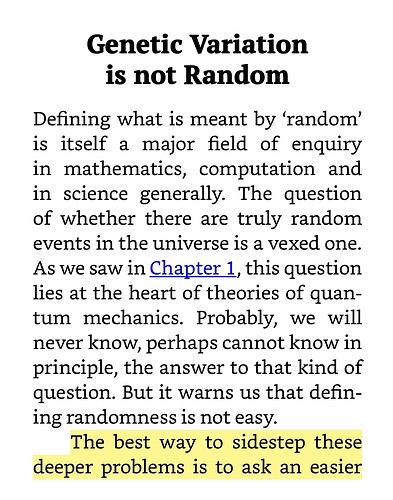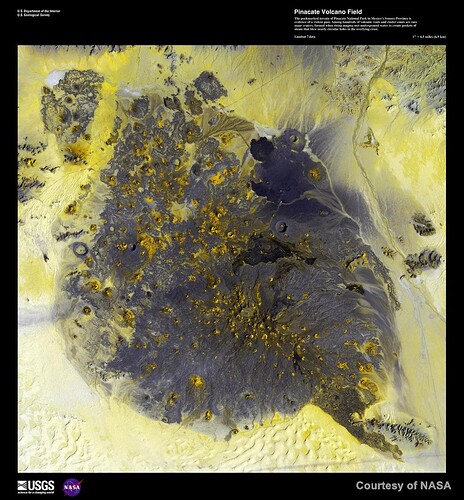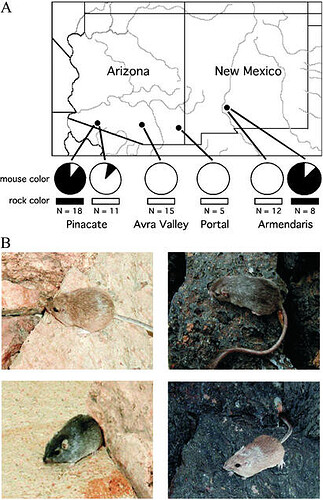Yeah, Futuyama’s article is pretty much spot on from my perspective.
Then it appears he is disagreeing with a strawman of his own making.
From Noble:
A deeper problem? “Random with respect to what?” was answered about 70 years ago. Mutations are random with respect to fitness. That is what biologists mean by random mutation. They DON’T mean random with respect to function or phenotype.
Again, when biologists say that mutations are random they mean random with respect to fitness. They DON’T mean random with respect to location in the genome or random with respect to function. These are strawmen Noble has erected in order to have something to disagree with. In fact, when mutations were found to be random with respect to fitness we didn’t even know the structure of DNA or what mutations looked like at the molecular level.
As to inherited acquired characteristics, it can happen in some species, but the acquired characteristics are minimal and they don’t last for more than a few generations. They are one of the exceptions that have already been incorporated into the theory. Most importantly, the mechanisms behind epigenetics and inherited acquired characteristics can not explain the major differences between large groups. For example, the differences between humans and lemurs is not due to inherited methylation patterns upstream of genes. Those differences are due to DNA sequence differences between their genomes.
If you had watched the video in the opening post you would have learned that Darwin’s views on variation were wrong. Darwin proposed acquired characteristics where the environment imprinted on gemmules which were then inherited by offspring. In other words, Darwin’s views on variation were very Lamarckian and not at all what was seen in the 1890’s with the birth of Neo-Darwinism which incorporated the Weissman barrier and Mendelian genetics.
As to natural selection not being natural or selective . . . what???
As @glipsnort mentions, it is not at all clear that transgenerational epigenetic modifications play a significant role. I think I can safely say that no biologists thinks major differences between large groups of species are due to transgenerational epigenetic modifications. Does it happen? Yes. But the effects of transgenerational epigenetic inheritance is small, and it doesn’t last more than few generations in the absence of the environmental conditions that cause it.
That’s exactly what we have been doing since Neo-Darwinism was proposed in the 1890’s. Epigenetics, niche construction, etc. are all incorporated into the theory.
The acquired characteristics are also not in general adaptive – they can easily be detrimental.
That’s right, you used the term fitness when we discussed this previously. I didn’t notice a disagreement there with the term function.
What is the difference between fitness and function?
Some functions are more likely than others in a given genome. Starting with a given DNA sequence there are certain functions that are going to be a few mutations away an others that are more distant. To be truthful, I have a hard time even understanding what Noble would mean by random with respect to function and how it relates to Lamarckism.
I see it as a question of whether mutations are random with respect to what benefits the organism. Fitness is synonymous to function for me.
That’s fitness.
For biologists, fitness and function aren’t synonymous. You can have a change in function that is neutral with respect to fitness, as one example. You can also have an increase in fitness caused by a mutation that destroys a specific function. Fitness is tied to natural selection, not function.
Among other differences, fitness is with respect to environment, and fitness can and often does change given constant function in a changing environment.
I saw it as what might be beneficial to an organism’s function… very interesting subject… I would be floored if Noble is that wrong in this area… which is basically the central issue of the disagreement
Agreed. It is worth pointing out that all environments are changing since there is no environmental niche that covers the entire Earth (at least none that I know of). Just in my area alone, you can drive one hour from sage brush covered high desert to alpine landscapes covered in evergreen forest. I often catch myself focusing on just the temporal changes in environment. The geographic changes are important also.
The expression of genes can be influenced by environmental factors. This interaction can affect an organism’s phenotype and its fitness. Do mutations occur before environmental changes,or is this assumed after a change is observed?
The response that I am familiar with is that mutations in DNA occur randomly and independently of environmental changes. They are not directed or influenced by the environment in a way that would cause specific beneficial mutations to arise in response to environmental changes. Instead, mutations happen spontaneously due to errors in DNA replication, exposure to certain chemicals, radiation, or other factors.
However, once mutations occur, the environment plays a crucial role in determining which mutations are advantageous, neutral, or detrimental. It is then assumed that natural selection then acts on this variation, favoring mutations that enhance an organism’s fitness in each environment.
Thus, mutations occur randomly, but the environment determines which mutations are beneficial and thus more likely to be passed on to future generations. This process is observed after environmental changes, as organisms with advantageous mutations are more likely to survive and reproduce.
Here is one of many difficulties with your treatment - mutations are random, and I assume environmental changes are random - so how would any selection be possible (that is, it is beneficial, deleterious, neutral, and all together)?
The link works fine for me. I understand what you’re saying now. It just sounded too deterministic at first glance.
Good gosh, yes. As a non-expert trying to keep up as best I can, I keep learning that I can’t keep up. Oof.
Right. This happens to be the one area I’ve studied in depth. But I still have questions …
Okay. But was there selective pressure, or did a few individuals luckily find themselves born with narrower hips, different sorts of feet, longer femurs, and take advantage afterward?
True. I’d forgotten about this. Fruits and nuts in trees supply a huge number of calories, but when climate change causes forest to be replaced by grasslands, coming down from the trees and standing upright to scan the horizon can be an advantage. I also remember some papers I read that challenged that scenario, but I can’t recall where the consensus settled. Probably in the “down from the trees to the savannah” scenario you cited.
Walking upright does allow the larynx to descend, which allows the possibility for the spinal column to expand and allow enervation of the diaphragm to control breathing, followed by changes to the hyoid bone to allow the full range of vowel sounds. The latter three are only found in erectus fossils about 1 million years ago.
I’m not suggesting there wasn’t enough time for evolution to occur or that God “engineered” all these changes to happen at once, but happenstance doesn’t suit me either. The only natural alternative I see is that early humans’ purposeful behavior created selective pressure on multiple fronts. Correct me if I’m wrong.
I’m not sure I understood my own question. Everything you said makes perfect sense. I wasn’t wondering if God (or an unnamed “designer”) purposefully engineered the system. I was wondering if early humans’ purposeful behavior counts toward “purpose” in biological evolution. Sorry for asking an undergrad level question. Haha
See. The answer is simpler than I imagined.
btw, the deeper problem was a brief tangent of Noble’s into the definition of whether anything is truly random and what is meant by the term. It followed the title of the section ‘Genetic Variation is not Random’
I looked up the definition of ‘physiological function’ and found this definition which seems to nuance Noble’s use of function slightly from how a biologist like yourself uses the term ‘function’
Physiological functions are central to the body’s normal functioning, which is known as the physiological state. Abnormal conditions, such as diseases, are known as pathological states.
It seems Noble is coming to this in the next section regarding misinterpretations of the Central Dogma
The Central Dogma of molecular biology was originally formulated by Francis Crick in 1956 following the discovery of the triplet code, in which each amino acid in a protein corresponds to three bases in the DNA or RNA.
Function - what it does.
Fitness - how well it does it.
Rather simplified (for example, doing many things too well are actually harmful to fitness, and environmental changes make some things fitter at times and less fit at others), but it gets at the issue for randomness.
The gene region coding for the part of antibodies that recognizes “this doesn’t belong here” mutates quite rapidly. The mutations are not independent of function; high mutation rates in the region are an essential part of how antibodies work.
But your DNA cannot decide to make an antibody that will recognize the COVID-19 virus, for example. It’s churning out loads of random mutations, most of which won’t match anything and some which can match harmless or even essential features (as in autoimmune problems). Yet some of them end up matching actual threats and being useful in defense.
Perhaps a clearer example of separating function and fitness would come from mutations in a single gene coding for an enzyme. Some mutations have no effect. Some will slightly increase the enzyme’s efficiency (at least under particular environmental conditions). Some will slightly decrease its efficiency. Some may change its function or make it dysfunctional.
Basically, an organism cannot say “I’m going to change chromosome 3, base 217476, from G to T because it would really help me.” It can have regions of DNA that are more or less likely to mutate, but whether any particular mutation helps, harms, or does nothing has to be tested against the environment.
We call this phenotypic plasticity, and it is a part of the modern theory.
Mutations and environmental change happen independently of one another. Mutations are constantly ticking away in the background no matter what the environment is doing. This is the very thing Luria, Delbruck, and the Lederbergs tested for back in the 1940’s and 50’s. Luria and Delbruck modeled mutations as a Poisson distribution. IOW, they modeled it as a given probability of getting a mutation based on the number of divisions through time. In their experiment, their results were consistent with bacteria getting a mutation for phage resistance prior to being exposed to phage.
It can happen at any time, even in stable environments.
It is possible in environments that are stable for enough generations to allow for selection.
One example I often point to is the rock pocket mouse and lava fields. There has been recent volcanism (last few million years) in the deserts of Arizona, one of which is the Pinacate lava flow:
This was a big change in the environment. At some point, a darker fur color was selected for on these islands of black basalt.
The genetic basis of adaptive melanism in pocket mice
The black mice are strongly selected for on black basalt while light colored mice are strongly selected against on black basalt. The opposite is true out in the light colored desert. The populations of black and light mice freely interbreed, but the strong bias in fur color is maintained in both populations.
Why? Predation, obviously. This is natural selection in action. You ask how this could be possible. I look and point out that it is happening right in front of us.
The Central Dogma is often misrepresented, and it’s a bit of a shame. The real Central Dogma, as described by Crick, states that nucleotide sequences can not be recapitulated from protein sequences. Sequence information can flow between types of nucleotide sequences, but once that sequence information is in proteins it can’t get out again.
Science avoids ontological claims. What we do in science is construct a statistical random model and then see if the data fits the model. For Luria and Delbruck, the random model was a Poisson distribution:
For their experimental setup, this model predicted that the mean number of phage resistant colonies in parallel cultures should equal the variance of colonies between those parallel cultures. That’s exactly what they observed. Some of the cultures had no resistant colonies. Some cultures had a handful. Some had hundreds. This is what you would expect to see if the mutation happened in a random generation in a growing culture prior to being exposed to the environmental challenge. If the mutation happens in an early generation then you get lots of resistant colonies. If it happens later then just a handful of resistant colonies.
IOW, the results were indistinguishable from what we would expect to see in our random model, so we tentatively conclude that the process is random.


